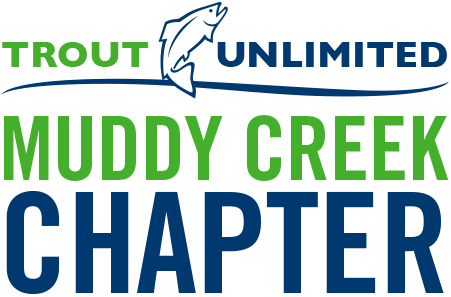TREES FOR TROUT
RIPARIAN FOREST BUFFERS
Riparian sounds fancy but it just means “streamside” in Latin. A Riparian Forest Buffer is simply an area of native trees and shrubs along a stream.
An unforested stream lacks protection from polluted runoff, streambank erostion, and sunlight. Without the help of trees, our watershed is much less likely to support the aquatic life that we all know and love.
Forests also give us many other benefits of course, from providing habitat for pollinators and wildlife, to sequestering carbon, to providing perennial food sources like native fruits and nuts.
Historically, we haven’t cherished our streamside woods as much as we should have. Many were cleared for development or agriculture. Our mission is to reforest as much of these riparian areas as we can by planting trees and shrubs, mostly on private land.
This will not only dramatically help clean up our local streams and eventually the Chesapeake Bay itself, but will exponentially improve the properties where trees are planted. Livestock will be healthier, pollinators and other wildlife, like our beloved trout, will flourish, and landowners will benefit from their new forests, which will only get better with time.
Watch the video to get a landowner perspective >>
Establishing a Riparian Forest Buffer is not as simple as planting tree seedlings and watching them grow. The long-term care of the site is what determines whether the site will become a fully mature and healthy forest. Over the past several decades, the procedure for preparing, planting, and maintaining sites has been fine-tuned to yield success.
It is important to prepare the planting site by controlling non-native invasive species which would hamper the young forest’s growth. A few weeks before the proposed planting date, we mark where each tree will be planted with a pin flag. This allows the landowner to visualize the planting and work with us to make adjustments before the trees are in the ground.
We plant young trees and shrubs, typically bare-root or small containerized seedlings. Younger stock is more resilient and more likely to quickly adapt to their new home. We protect these young stems from deer and other herbivores with tree shelters, which stay around the tree for several (typically between 5 and 10) years to ensure that it has a good chance of surviving to maturity.
After the planting, the real work begins. Sites need regular maintenance. Vegetation control is crucial in order to reduce rodent damage and give enough light to the trees.
Sounds great! How can I get invovled?
Any landowner, from private citizens to municipalities to churches and schools, is eligible for our riparian forest buffer program. We cover 100% of the costs of the trees and supplies required to establish the buffer. This includes invasive plant control, tree tubes and stakes, installation labor, and 3 years of post-planting maintenance.
We also have volunteer opportunites for those who want to get their hands dirty. If you want to help but don’t own property and can’t help plant, you can always help by dontating to the cause.
Sign up as a volunteer for our next planting on October 30th!














